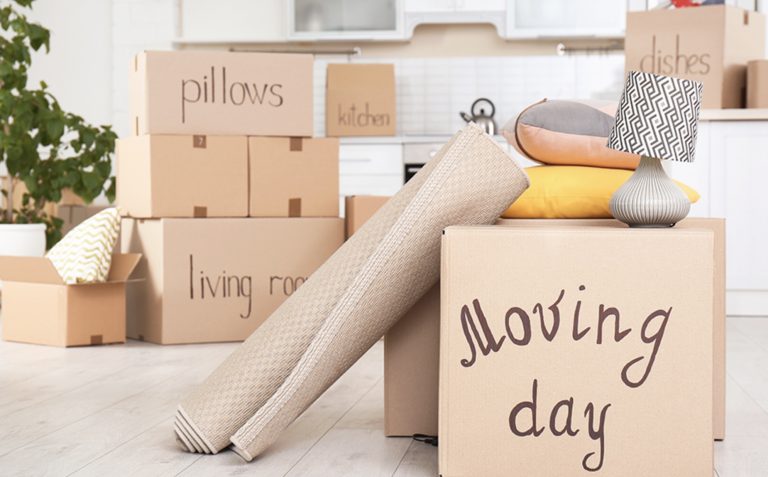Based on a recent poll from Move.org, 20 percent of surveyed Americans moved to a new location in the past year, and while most chose to remain within state lines, 14 percent moved outside their former home state.
In this current landscape, there are many causes for a long-distance move: to relocate for employment, to access more affordable housing, to evacuate an area with a high rate of COVID-19 cases, and so on. But whatever the reason for your move, apartment hunting in a new city can be quite stressful.
Due to health precautions, many leasing offices do not allow in-person tours right now which means that your search might be limited to online. But no matter where you’re moving to or how soon it’s taking place, the information below can help to streamline this process, so all that’s left is to settle into your brand new home.
Story Stages
Know What to Look for When Doing Your Online Research.
There are numerous considerations to factor in before making a decision about your future apartment rental which can be hard to evaluate sight unseen. However, these tips from the leasing professionals at EPOCH Student Living will help direct your online research, so you can make an informed choice about where to live:
- Use a virtual map to check out the location. What is nearby in either driving or walking distance? Does the surrounding area meet your specific lifestyle needs or preferences? Before anything else, take into account where the apartment is located.
- Once you have scoped out the location, visit the leasing office’s website to see what virtual resources they offer to aid in your decision. Are there videos or 3-D tours you can watch online to help visualize both the interior and exterior spaces? Is there a rundown of amenities such as a pool area, fitness center, laundry room or dog park? Are any utilities bundled into the rent? Can you view images of the property and see a layout and price range for each available floor plan? If you’re unable to tour the apartment onsite, these resources can at least give you a sense of what to expect.
- After perusing the website, search for online reviews from actual tenants who have experienced living in this apartment firsthand. What is their honest account of both the property and management? Do any of their comments set off alarm bells in your head? What can you tolerate and what are your non-negotiables? Reviews and testimonials can help you narrow this down. Check out ApartmentRatings.com for an extensive database of online reviews in zip codes all across the United States.
- If you are embarking on a solo move, will you need someone to share expenses with? If so, add a local roommate matching service to your online research. A websites such as Roomster is a safe and reputable way to find the right person to share your future space with. You can swap contact information, social media accounts and LinkedIn profiles on this platform to communicate with potential roommates before committing.
Calculate All Moving Costs in Order to Budget Accordingly.
In 2021, the national average cost for an out of state move is $4,325, with a broader range of $2,551 to $6,381 depending on the overall distance and size of load, reports Home Advisor. Some additional factors that will influence this cost are the kind of moving service you use, whether you need to ship certain items, which packing materials you need to purchase, and if you choose to tack on moving insurance.
You’ll also need to factor in gas prices, meals and overnight hotel rates if the trip to your new home takes more than a day. Here is a breakdown of the moving expenses to be aware of and budget for, so you’re not taken off-guard by potential hidden fees. (Note: these calculations from Home Advisor are based on long-distance moves of at least 400 miles.) In addition to these costs, you might also consider hiring the best car shipping company, especially if you’re moving cross-country. This will allow you to avoid wear and tear on your vehicle and potential delays due to unforeseen issues on the road.
- Full Service Mover: $4,000 to $10,000+
- Moving Truck Rental: $1,200 to $2,100
- Shipping Container: $700 to $5,000
- Furniture Shipping: $300 to $800 per item
- Vehicle Shipping: $710 to $2,060 (Move.org estimate)
- Packing Materials: $100 to $350
- Packing/Unpacking Labor: $370 to $3,600
- Moving Insurance: 1–5% of total item value (Forbes estimate)
- New State Driver’s License: $10 to $100
- New State Vehicle Registration: $15 to $300
- Average Hotel Rate: $90 per night (Statista estimate)
- Gas and Food: will vary per state or region
In addition, it’s also important to keep in mind that most apartments require a security deposit and the first month’s rent to be paid upfront before you move in. So find out these costs from your leasing office and make sure to budget for them as well.
Set Yourself Up for Success with an Out of State Move.
While you might feel stressed or overwhelmed at the prospect of a long-distance move, it can also be just the fresh start you need in 2021. As you prepare for this transition, get your finances in order and hunt for a new apartment sight unseen, the information presented here will come in handy. When you need to move in or around Atlanta, hire movers in Atlanta. Wherever you’re off to, a new home—and chapter—awaits!
